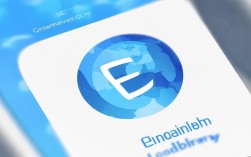点题 = 理解 + 回应 + 展开
“点题”不是简单地重复题目,而是在深刻理解题目意图的基础上,给出一个清晰、有力的回应,并围绕这个回应进行有逻辑、有细节的展开,它像是在搭建一座房子,题目是地基,你的回应是承重墙,而展开的内容则是房间的内部装修。

第一部分:精准理解题目 - “点题”的前提
很多考生分数不高的根本原因在于没听懂题目,或者理解有偏差,雅思口语题目看似简单,但暗藏玄机。
识别题型,预判方向
雅思口语Part 1, 2, 3 的题型和考察重点不同,点题策略也需随之调整。
-
Part 1 (日常问答): 考察基本交流能力,题目简单,但回答要自然、流畅、有细节。
-
Do you...,Is/Are...,What/Where/Who... - 点题策略: 直接回答 + 简单解释/举例,不需要长篇大论,但要完整。
-
-
Part 2 (个人陈述): 考察组织语言和连贯叙述的能力,题目卡片上有明确的提示问题,这是你的回答提纲。
-
Describe...,You should say:,Explain... - 点题策略: 严格按照提示问题的顺序来组织你的回答,每个提示问题都是一个“点题”的锚点。
-
-
Part 3 (深入讨论): 考察辩证思维和抽象讨论能力,题目更宏观,需要你基于Part 2的个人经历进行拔高和拓展。
-
Why do you think...,What are the differences...,How might this change in the future... - 点题策略: 直接回应问题核心,然后给出理由、分析、对比或预测,这是展示你词汇量和语法深度的最佳时机。
-
拆解题目关键词 不要急着说,先在心里把它拆解成几个部分,确保你抓住了所有关键信息。
【例题】Describe a time you received some good news from someone you didn't know well.
- 核心名词:
good news - 限定条件1:
a time(过去时) - 限定条件2:
from someone you didn't know well(信息来源是陌生人/不太熟的人) - 隐含要求: 你需要描述这个事件,并解释它为什么是“好消息”,以及它对你的影响。
如果你只说了“我收到了好消息”,但没有强调是“来自不熟的人”,那就没有完全点题。
第二部分:高效回应题目 - “点题”的核心
后,如何给出一个漂亮的回应?这里介绍几个黄金法则。
直接回应,开门见山
这是最基本也最有效的方法,直接回答问题,表明你听懂了。
-
Part 1:
- Q:
Do you like cooking? - A:
Yes, I absolutely love it. It's not just about preparing food; for me, it's a creative process and a great way to unwind after a long day.(直接回答Yes+ 解释为什么)
- Q:
-
Part 3:
- Q:
Why do some people think history is boring? - A:
I believe the main reason is that the way history is often taught in schools is very fact-based and dry, focusing on memorizing dates and names rather than the fascinating stories and human dramas behind them.(直接给出核心原因)
- Q:
“万能公式” - P.E.E.L. / O.R.I.D.
对于需要展开论述的题目(尤其是Part 2和Part 3),使用这个结构能让你的回答逻辑清晰,条理分明。
-
P.E.E.L. (Point - Explain - Example - Link)
- Point (观点): 直接给出你的核心观点。
- Explain (解释): 解释为什么你这么认为。
- Example (例子): 用一个具体的例子来支撑你的观点。
- Link (联系): 将你的观点与更广泛的社会或个人层面联系起来,升华主题。
-
O.R.I.D. (Opinion - Reason - Illustration - Discussion)
- Opinion (看法): 表明你的立场或看法。
- Reason (理由): 给出支持你看法的理由。
- Illustration (例证): 举例说明。
- Discussion (讨论): 探讨其影响、利弊或未来发展。
【实战演练 - Part 3】
Q: Do you think people are more concerned about their health nowadays compared to the past?
- O (Opinion):
Yes, without a doubt, people today are far more health-conscious than previous generations. - R (Reason):
This is largely due to the explosion of information available through the internet and social media, which has made health knowledge more accessible than ever. - I (Illustration):
For instance, my parents used to think that being "healthy" simply meant not being sick. But now, my friends and I are constantly tracking our steps, counting calories, and researching the nutritional value of everything we eat. - D (Discussion):
This shift has led to a booming wellness industry, but it has also created a new kind of anxiety for some people, who feel pressured to conform to unrealistic body standards or extreme diets.
运用连接词,逻辑显性化
连接词是“点题”的胶水,它们能让考官清晰地跟上你的思路。
- 表补充:
Moreover,Furthermore,In addition, - 表转折:
However,On the other hand,Nevertheless, - 表因果:
Therefore,As a result,This is because... - 表举例:
For example,To illustrate,A case in point is... - 表总结:
In conclusion,To sum up,Overall,All in all,
第三部分:巧妙拓展题目 - “点题”的升华
只回答问题是“及格”,而能巧妙地拓展题目,展现出你的语言驾驭能力,才是“优秀”。
从个人经历到社会现象 (Part 2 -> Part 3)
这是Part 3的核心考察点,考官会根据你的个人故事,提出一个更宏观的问题。
- Part 2话题:
Describe a book you enjoyed reading. - Part 3问题:
Why do you think some people don't like reading books?- 错误示范:
Because they are busy.(过于简单) - 优秀示范:
That's a great question. I think there are a few reasons. Firstly, in our fast-paced digital age, people are used to getting information in short, bite-sized formats like videos and social media posts, which makes sitting down with a long book feel like a huge time commitment. Secondly, many people might not have been encouraged to read for pleasure in school, associating it with pressure and exams rather than enjoyment.(从“快节奏”和“教育方式”两个层面深入分析)
- 错误示范:
使用“高级”词汇和句式
在准确点题的基础上,用更丰富的语言来包装你的回答。
- 避免重复:
like->such as,for instance,includinggood->excellent,beneficial,positive,remarkableimportant->crucial,vital,significant,essential
- 尝试复杂句:
- 简单句:
I like this city. The people are friendly. The food is delicious. - 复杂句:
What I particularly appreciate about this city is the combination of its incredibly friendly locals and the mouth-watering food, which makes every day here a delightful experience.
- 简单句:
融入情感和细节
让回答“活”起来,不要只说事实,要说出你的感受和观察。
- 平淡:
I went to a park. It was nice. - 生动:
I remember wandering into this park on a sunny afternoon. The sun was filtering through the leaves, creating a beautiful mosaic of light on the ground. There was a gentle breeze, and the sound of children laughing and birds chirping just created a sense of peace and tranquility that I really needed.
第四部分:实战演练 - 三部分点题策略
**话题:Describe a friend who you enjoy











